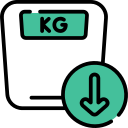Q. How is esophagitis diagnosed?
Doctor Answer is medically reviewed by SecondMedic medical review team.
Esophagitis is typically diagnosed through a combination of physical examination, endoscopy and biopsy. During the physical examination, your doctor may listen to your chest with a stethoscope for signs of inflammation in the esophagus or other issues that may be causing your symptoms.
Endoscopy is an important diagnostic procedure used to visualize the inside of the esophagus directly. A thin, flexible tube with a camera on one end (an endoscope) is carefully passed through your throat so that changes inside can be examined closely. Biopsies may also be taken during an endoscopy to analyze tissue samples under a microscope or tested for certain bacteria and viruses if needed.
In addition to these diagnostic procedures, blood tests can be performed to measure acid levels in the body as well as special tests like pH impedance testing which allow doctors to measure how much acid moves from within the stomach up into the lower part of your esophagus over time. Imaging studies such as X-ray and ultrasound are also sometimes used by doctors when making a diagnosis for esophagitis as well.
Related Questions
-
Are there any medications specifically designed to control Tachycardia, and what are their mechanisms of action? | Secondmedic
-
What are the potential symptoms and warning signs of irregular heart beats? | Secondmedic
-
What is the difference between heart attack and heart failure
-
What causes Atrial Septal Defects, and are there any risk factors associated with this condition? | Secondmedic
-
Cardiology Heart disease What anti-inflammatory can I take with











